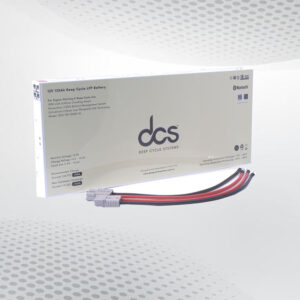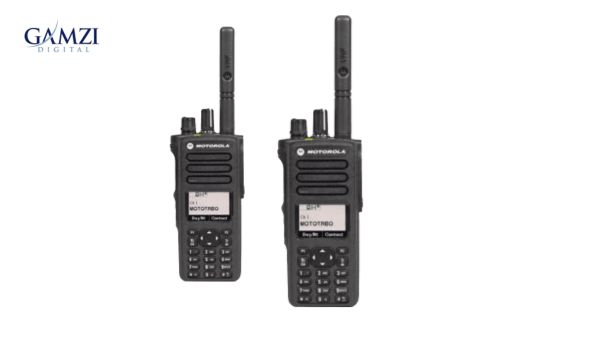Imagine stepping into a room that feels just right—not too hot or cold—but perfectly comfortable. Behind this ideal climate lies the heat exchanger fan, an unsung hero of modern heating and cooling systems. As energy efficiency becomes increasingly important in our homes and workplaces, understanding how these innovative devices operate can transform your environment while saving you money on utility bills. In this blog post, we’ll dive deep into the fascinating world of heat exchange fans, unravelling their mechanics and revealing why they are essential for anyone looking to enhance comfort while reducing their carbon footprint.
Introduction to Heat Exchange Fans
When it comes to keeping their homes comfortable and energy-efficient, many people overlook a powerful ally: the heat exchange fan. This innovative device not only helps regulate temperature but also plays a crucial role in maintaining air quality throughout their living spaces. Imagine enjoying fresh, cool air during those sweltering summer months without raising sky-high energy bills. Sounds ideal.
In this blog post, we’ll delve into the world of heat exchange fans—how they function, their benefits, and why investing in one could be a game-changer for your household comfort. Whether you’re considering upgrading your current system or just curious how these fans work, you’re in the right place! Let’s explore what makes heat exchange fans an essential addition to any modern home.
How Do Heat Exchange Fans Work?
Heat exchange fans operate on a simple yet effective principle: transferring heat between two air streams without mixing them. This process allows fresh air to enter while expelling stale air, creating a balanced and comfortable indoor environment.
Inside the fan unit, you’ll find two primary ducts. One duct brings in cold outdoor air, while the other exhausts warm indoor air. As these two air flows pass through a heat exchanger core, thermal energy is transferred from one stream to another.
This means that incoming fresh air is pre-warmed by exiting warm air before entering your living space. This enhances comfort levels and improves energy efficiency by reducing heating costs during colder months.
The design of these systems often includes filters, too, ensuring the incoming airflow remains clean and free from allergens or pollutants. Such features make heat exchange fans essential to maintaining healthy indoor conditions.
Benefits of Using a Heat Exchange Ventilation Fan
Heat exchange ventilation fans are becoming increasingly popular because they efficiently and effectively circulate air in a building. This section will explore the benefits of using a heat exchange ventilation fan and how it can improve indoor air quality.
1. Improved Air Quality
One of the main benefits of using a heat exchange ventilation fan is improved indoor air quality. These fans continuously circulate fresh outdoor air into your building while exhausting stale indoor air. This constant flow of fresh air helps to remove any pollutants, allergens, or odours that may be present in your home or office. With better air quality, you can breathe easier and reduce the risk of respiratory problems.
2. Energy Efficiency
Heat exchange ventilation fans also offer energy efficiency advantages. These fans can significantly reduce heating and cooling costs by exchanging heat between incoming and outgoing airstreams. During colder months, warm exhaust air preheats the cold incoming air, reducing the amount of energy needed to heat it up. Similarly, during hotter months, cool exhaust air lowers the temperature of incoming warm outdoor air before being circulated back into your building.
3. Moisture Control
Another benefit of using a heat exchange ventilation fan is its ability to control moisture levels in your building. Excessive moisture in enclosed spaces can lead to mould growth and cause damage to walls and ceilings. By constantly replacing stale indoor air with fresh outdoor air, these fans help regulate humidity levels and prevent excess moisture from accumulating.
4. Cost Savings
Heat exchange ventilation fans save energy costs on heating and cooling bills and require minimal maintenance compared to other HVAC systems. With no filters or motors to replace regularly, these fans have lower operating costs over time.
Types of Heat Exchange Fans
Heat exchange fans come in various types, each designed to meet specific needs. One common type is the exhaust fan, which efficiently removes stale air from space while promoting fresh air circulation.
Another variant is the supply fan. This model introduces conditioned air into an environment, enhancing comfort and energy efficiency. Then, there are balanced systems that utilize both supply and exhaust functions. These systems work harmoniously to maintain optimal indoor air quality.
For tailored performance, some heat exchange fans feature advanced technology, such as variable speed settings or smart controls. Others may focus on simplicity and reliability, making installation easier. Each type offers unique advantages, catering to different spaces—residential or commercial—ensuring you find the perfect fit for your requirements.
Factors to Consider When Choosing a Heat Exchange System
When choosing a heat exchange system, several factors need to be considered. These factors will ultimately determine the system’s performance, efficiency, and suitability for specific needs.
1.Type of Heat Exchange System
The first factor to consider is the type of heat exchange system you require. There are three main types of heat exchange systems: air-to-air, liquid-to-liquid, and air-to-liquid. Each type has its advantages and disadvantages, so it is essential to understand your specific needs before deciding.
2. Size and Capacity
The size and capacity of the heat exchange system must also be carefully considered. This will depend on the amount of heat that needs to be transferred and the size of the space in which it will be installed. Choosing a system that is appropriately sized for your needs is crucial, as an undersized or oversized unit can result in inefficiency and higher energy costs.
3. Heat Transfer Efficiency
Another essential factor to consider is the efficiency with which a heat exchange system transfers heat from one medium to another. This efficiency is often measured by the Coefficient of Performance (COP), which indicates how much energy is transferred compared to how much power the system consumes.
4. Energy Consumption
Energy consumption should also be considered when selecting a heat exchange system. Look for systems with high COP ratings, as they use less energy while still effectively transferring heat.
Installation and Maintenance Tips for Heat Exchange Fans
Proper installation is crucial for optimal performance. Start by ensuring the fan is positioned correctly to maximize airflow and efficiency. Follow the manufacturer’s guidelines carefully, as each model may have specific requirements. Regular maintenance helps prolong the life of your heat exchange fan. Check filters monthly and clean them to prevent dust buildup. A clogged filter can significantly reduce effectiveness.
Inspect the fan blades for any debris or damage every few months. Clean them gently with a soft cloth to maintain their function.
Listen for unusual noises during operation; this could indicate mechanical issues that need addressing promptly. Lastly, schedule professional inspections annually to ensure everything works smoothly and efficiently over time. Keeping an eye on these elements will help you enjoy all the benefits of your heat exchange fan without hiccups.
Common Misconceptions about Heat Exchange Fans
Many people believe that heat exchange fans are just for industrial use. This misconception overlooks their value in residential settings. Homeowners can significantly benefit from improved air quality and energy efficiency.
Another common myth is that these fans only work in colder climates. In reality, they are effective year-round, helping to regulate temperature regardless of the season. Some assume that installation requires major renovations or complex systems. However, many models are designed for easy setup and can seamlessly integrate into existing ventilation systems.
There’s also a notion that heat exchange fans are noisy or disruptive. Modern designs prioritize quiet operation while enhancing comfort within your space. Lastly, maintenance is burdensome. These devices offer hassle-free performance over time with proper care and occasional cleaning. Understanding these misconceptions helps you appreciate the advantages of heat exchange fans in any environment.
Conclusion
A heat exchange fan is more than just a tool for regulating temperature. It plays a crucial role in enhancing energy efficiency and indoor air quality. Transferring heat from one area to another minimizes the need for additional heating or cooling systems. This reduces your energy bills and contributes to a more sustainable home environment. Moreover, these fans aid in maintaining consistent temperatures throughout your living space, which can lead to increased comfort levels year-round. When you choose the right type of heat exchange fan tailored to your specific needs, you’ll notice significant improvements in both comfort and efficiency.
FAQs
1. What is a heat exchange fan?
A heat exchange fan, also known as an air-to-air heat exchanger or energy recovery ventilator, is a device that helps to regulate the temperature and moisture levels in indoor environments. It transfers heat and humidity between incoming and outgoing air streams, improving air quality and reducing energy costs.
2. How does a heat exchange fan work?
Heat exchange fans use two air streams – one for incoming fresh air and the other for outgoing stale air. These two streams pass through an insulated core where they come into close contact but do not mix. Heat and moisture from the outgoing air are transferred to the incoming air, while pollutants are filtered out.
3. What are the benefits of using a heat exchange fan?
Using a heat exchange fan has several benefits, including improving indoor air quality by removing dust, pollen, and allergens from the incoming air stream. It also helps to maintain comfortable temperatures inside your home or workplace while reducing heating and cooling costs.
| Related Business Listings |
| Contact Directory |
| Local Business Profiles |




